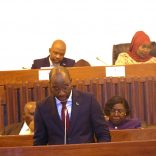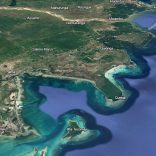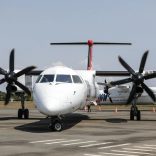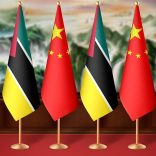Mozambique: Waiving Social Security fines "is a sensible measure" - Kekobad Patel
Mozambique: Governor highlights Maputo province as a prime investment hub

Photo:
Maputo province approved 68 investment projects between 2020 and 2024, budgeted at over US$2 billion, consolidating its position as the country’s main industrial and economic hub.
Last year alone, the province approved investments totalled US$385.3 million, reinforcing the region’s attractiveness.
The announcement was made yesterday at the International Business Fair (FACIM 2025) by the Governor of Maputo province, Manuel Tule, who highlighted the region’s economic, geostrategic and industrial potential.
“Maputo province is a great place to invest. We have a geostrategic location, a robust transportation network, electricity, gas, water, and communications available. All of this creates ideal conditions for welcoming serious and sustainable investments,” said Tule.
According to the Governor, Maputo province is home to 1,086 manufacturing industries, confirming its position as the most industrialized province in the country. The Beluluane Industrial Park, founded 25 years ago, is today one of the greatest symbols of this vocation.
The complex already employs 12,000 workers and hosts more than 50 companies from 18 countries, in a space that, according to Governor Tule, “shows how large projects can boost value chains and attract foreign investment”.
Besides Beluluane, new projects are underway to establish district industrial parks, with the aim of expanding industrialization beyond the capital.
The agricultural sector is another priority for Maputo province, which has 1.2 million hectares of arable land, 50% of which is available for investment.
“We have the conditions for fruit trees, such as macadamia nuts and lychees, as well as cereals, legumes, and vegetables. We want to establish a large supply market to absorb all production and ensure year-round food security,” Tule emphasized.
According to Manuel Tule, Maputo province is also a regional trade hub, with established exchanges with South Africa, Eswatini, and Zimbabwe, supported by logistics corridors such as the N4, the Ressano Garcia railway, and the Limpopo Corridor.
The Port of Maputo and Matola reinforce this position, with a capacity to handle 2 million tons of fuel per year, 250,000 tons of aluminium, and 500,000 tons of grain, in addition to storage for 45,000 tons.
The Governor noted that the province has energy stability, with supplies coming from Cahora Bassa, the CTRG plant [the Ressano Garcia Power Plant], and Gigawatt, ensuring power for industry.

In the water sector, Maputo province has three river basins – the Maputo, Incomáti, and Umbelúzi – and operating dams, such as Pequenos Libombos and Corumana. The Moamba Major project is an initiative currently under preparation and should strengthen irrigation and flood control.
In the field of tourism and conservation, the province also has great tourism potential, with 215 km of beaches, including Ponta do Ouro, Macaneta, and Machubo, and the Maputo National Park, recently recognized by UNESCO as a World Heritage Site.
Governor Tule also highlighted the potential of the Big Five for local conservation areas, which attract tourists interested in lions, elephants, buffaloes, rhinos, and giraffes.
Manuel Tule concluded by emphasizing that Maputo combines all the factors to continue being the country’s economic engine. “We have a privileged location, industrial parks, arable land, energy, water, and solid regional connections. The challenge now is to transform these potentialities into more jobs, more production, and more development for Mozambique,” he said.












Leave a Reply
Be the First to Comment!
You must be logged in to post a comment.
You must be logged in to post a comment.